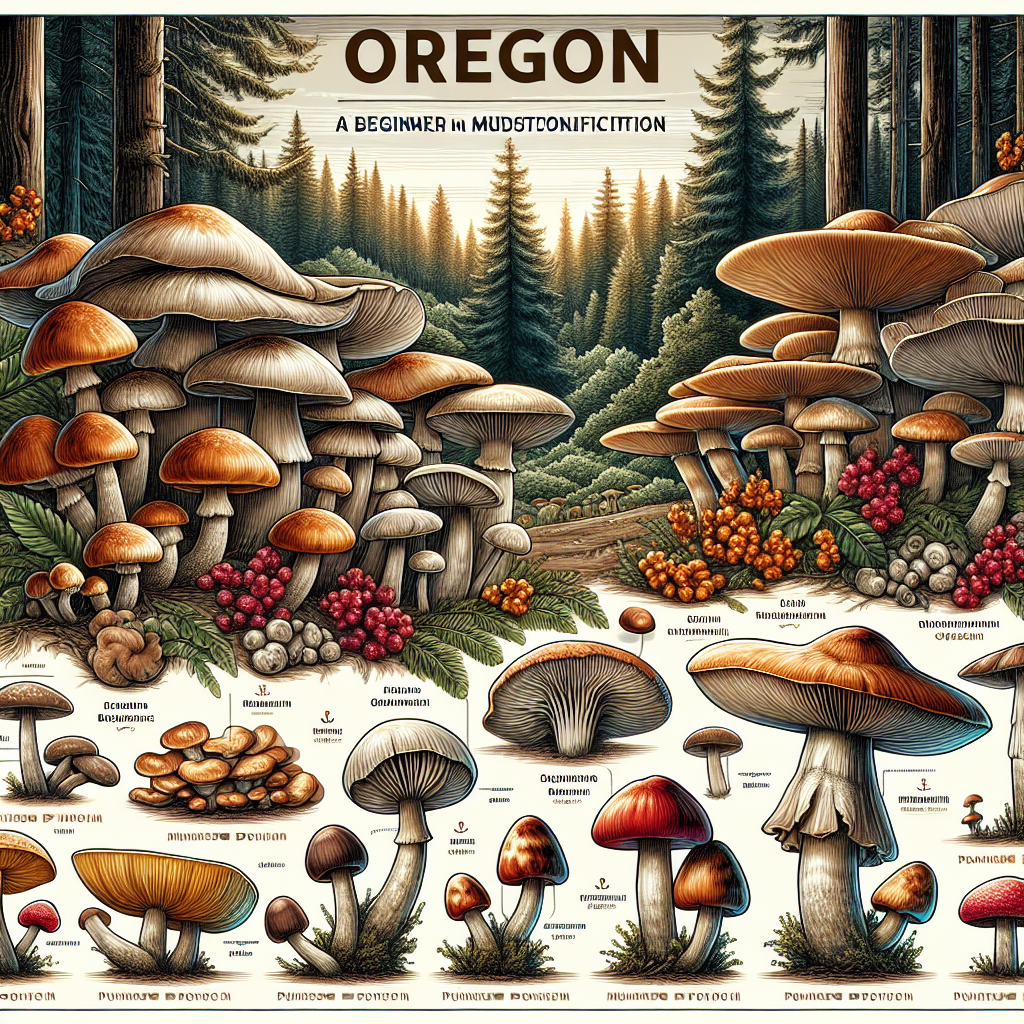Title: A Beginner’s Guide to Mushroom Identification in Oregon
Introduction: Oregon – Mushroom Hunter’s Paradise
Right here in the Pacific Northwest lies a magical wonderland for mushroom enthusiasts. When the fall rain spells arrive, Oregon forests transform into a mycologist’s paradise. Oregon’s diverse landscapes, from the coastal regions to the Cascade Range, sustain a variety of mushroom species, waiting to be discovered.
Know Your Mushrooms: Common Types Found in Oregon
Mushroom identification can seem a tad overwhelming at first, but the good news is you can start by getting familiar with some staples. Varieties like the Chanterelles, Morels, Porcini, and the Oregon White Truffle are locally abundant, good for eating, and relatively easy to identify.
Chanterelles often hide under ferns and foliage around old growth Doug Fir stands—quite the sight for a rainy day hike around Portland Forest Park. If a prospecting trip to Central Oregon is on the cards, look out for Morels. They’re partial to charred ground and recently burned areas—an unexpected silver lining to wildfire season.
Gearing Up: What You’ll Need

Accomplished foragers know which tools of the trade are needed. A good, sharp knife for cutting stems and a woven basket for collecting the day’s bounty are essentials. May we suggest Danner, a century-old Portland boot company, for your foraging footwear? Their boots uphold the robustness needed for traipsing through the Tillamook forest or the Mount Hood National Park.
Rules of the Hunt: Navigating Mushrooms Responsibly
Being a responsible mushroom forager isn’t just about knowing your Morels from your deadly Amanitas. The “take only photos, leave only footprints” adage falls short here. However, many locals use a saying of their own—”tread lightly and cut sparingly”. Stick to established trails, prevent overharvesting by taking only what’s needed, and give back to the planted friends by re-sowing spores from harvested mushrooms.
Foraging legally is pretty straightforward too. Free personal use foraging is permitted in many national forests, but rules vary. Say, when foraging in the Siuslaw National Forest, remember a permit is required. Knowing the local rules and regulations can prevent an unexpected encounter with a forest ranger.
When and Where: Foraging Timing and Places
Mushroom season tends to kick into gear around late September, peaking in October and November. Early birds can start scouting in late summer for some varieties. As weather conditions in regions like the coast can change rapidly in the afternoon, it’s best to embark on a foraging expedition in the early hours.
Oregon’s state parks are off-limits for foraging, but head over to Mount Pisgah Arboretum, a popular spot among locals, where foraging is permitted along with guided mushroom hunts.
The Safety First Protocol: Identifying What’s Safe and What’s Not
The biggest local advice to newbies? Never eat a mushroom you cannot positively identify. Fatalities from misidentification in Oregon, though rare, have happened. Seasoned foragers often double-check with guidebooks or turn to experts at places like Oregon Mycological Society before feasting on their haul.
Turning Haul into Deliciousness: Enjoying Your Finds
Oregonians take pride in their wild edibles, and establishments across the state echo this love. Taking your haul home and cooking up a storm is wonderful. However, if you’re uncertain about cooking with mushrooms, take your foraged treasures to places like Nostrana in Portland or Marche in Eugene, which have been known to dazzle diners with locally foraged mushrooms.
On Oregon Trails and Mushroom Tales
Foraging for mushrooms in Oregon isn’t just about the excitement of the hunt and the joy of the feast—it’s about enjoying the rich woodsy aroma of the old Doug Fir stands or the misty morning quietude of the Coast Range. Soak in the ethereal beauty of Silver Falls State Park’s autumn colors or take a leisure stroll on the Wildwood Trail while searching for delicious fungi.
Remember, mushroom hunting is only partly about hunting mushrooms. The real pleasure lies in wandering through Oregon’s beautiful wilderness and forming deep connections with its vibrant ecosystems. Breathe in deeply. You’re no longer a visitor but part of Oregon’s magical forests. Whether you return with a bounty of Chanterelles or just a few muddy boots, know that the forest has gifted you a treasure—a day of peace and tranquillity, of rain and moss, fern and fir, the uniquely enchanting Oregon way.
